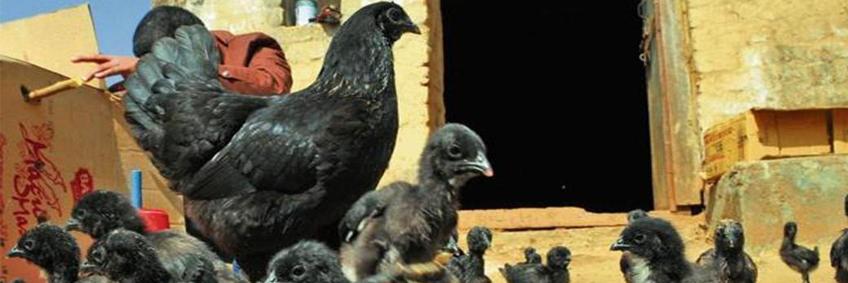The chicken and egg wars

Last week, there was cause for celebration in Madhya Pradesh as the local black fowl, Kadaknath, was awarded Geographical Indication (GI) status. This bit of news offered some salve for the poultry industry, which has been in crisis mode since an article published in The Guardian in February revealed how farmed chicken in India is pumped with the strongest antibiotics. Overnight, some people swore off chicken, while others returned to their tikkas once the issue lost its prime-time appeal.
As scientists work round the clock to come up with a solution to the country’s growing demand for chicken, the poultry industry is poised on the cusp of change. Lounge takes a closer look at a few of the big questions around this little bird.
Is black the new white?
It was a war for GI supremacy between Madhya Pradesh (MP) and Chhattisgarh as the neighbouring states went head-to-head to claim the local Kadaknath chicken. While the first farms rearing this all-black chicken were set up in Jhabua in Madhya Pradesh in the 1970s, it was Chhattisgarh’s Naxal-affected Dantewada that came up with a winning breeding programme. Although both states had filed for certification, MP emerged the winner, and, almost simultaneously, also came up with an app to market and sell the chicken across the country.
Touted as the black superbird for its high protein and iron content and low cholesterol index, Kadaknath is a rather striking bird, black from beak to bone. Despite being substantially more expensive than the standard chicken, retailing at anything from Rs500-900 per kilogram, it is finding takers among health food enthusiasts as well as fine-dining restaurants. Mumbai’s Indigo Delicatessen serves a slow-cooked black fowl and root vegetable stew while Hyderabad’s organic restaurant Jivati serves up a spicy Andhra-style curry featuring this bird. As chefs like Manish Mehrotra and Jiggs Kalra experiment with new dishes featuring the Kadaknath, this black bird seems destined for culinary fame.
What did we learn from the colistin-laden bird?
There was mayhem in the aftermath of The Guardian article, titled “India’s Farmed Chickens Dosed With World’s Strongest Antibiotics, Study Finds”. The idea of a potential superbug that could arise from the consumption of colistin-laden birds struck fear into the heart of the staunchest chicken-loving Indian. The Food Safety and Standards Authority of India (FSSAI) also came under the scanner—antibiotic usage among livestock and poultry remains unregulated. Vast quantities of colistin, the last-resort antibiotics used to treat drug-resistant infections, enter India’s massive poultry chain to treat the birds and help them grow faster. This study by the London-based Bureau of Investigative Journalism was picked up by the Indian media. As the conversation around this increases, here’s hoping the stakeholders take action and more free-range chicken farms come up around the country.
Can the chicken we eat ever be clean?
A possible answer lies in the clean meats of tomorrow. Last week, animal welfare organization Humane Society International (HSI) India in partnership with Hyderabad-based Centre for Cellular and Molecular Biology announced that they will soon start manufacturing clean meat in a petri dish. The lab-grown meat developed from the bird’s tissue will not require medicines or additives and will do away with issues related to cruelty against animals. As the meat will be grown outside the animal, tweaking the actual nutritional content of the meat could become a real possibility. Although it will take a few years for the product to hit the market, research and development is under way.
Will American drumsticks and Japanese eggs rule the roost?
In the more forseeable future, American chicken legs will soon be lining Indian supermarket shelves. The Union government has lifted food restrictions, allowing frozen poultry from the US. This move is set to meet the growing demand in India for the chicken leg or drumstick, which is considered a prized cut. From the tangri kebab of the north to the chicken fry of the south, there is a chicken drumstick for every occasion.
Meanwhile, in an interesting turn of events, Suzuki, the legendary Japanese carmaker that changed how India looks at cars, is now set to do the same thing with eggs. It has teamed up with Japan’s largest egg producer, Ise Foods, to set up farms based on the latter’s high-tech and hygienic model of egg production, providing know-how and a boost to the domestic egg market.
source: www.livemint.com









.jpg)



